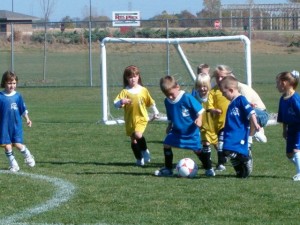The top reasons that teams have difficulty:
1. Lack of agreement around what is important
Ask your team to close their eyes and point North. Are they all pointing in the same direction or are they pointing every which way but loose?
Ask your team, “What are our most important priorities?” Are they talking about the same stuff or are they all over the board?
Ask your family, “What is the purpose of our family?” Listen to what they have to say.
The number one reason that teams flounder is because they don’t understand what is important.
23,000 US residents were surveyed asking questions about their perception of the organization that they work for. Here are the results.
37% said they have a clear understanding of what their organization is trying to achieve and why.
1/5 is enthusiastic about team’s and organization’s goals.
1/5 have a clear “line of sight” between tasks and team and organization’s goals
Half are satisfied with the work they have accomplished at the end of the week
15% felt organization fully enables them to execute key goals.
15% felt they worked in a high-trust environment
17% felt their organization fosters open communication
10% felt that their organization holds people accountable for results
20% fully trusted the organization they work for.
13% have high trust, highly cooperative working relationships with other groups or departments.
If a soccer team had these same scores:
4/11 would know which goal was theirs
2/11 would care
2/11 would know what position they play and know exactly what they are supposed to do.
All but 2 players would, in some way, be competing against their own team members rather than the opponent.
The number 2 reason teams have difficulty is conflict among the team.
It’s important to create some ground rules about how you want to work together. Team members can then hold each other accountable to the ground rules which they have created.
The number 3 reason teams fail is: A lack of clarity around roles and responsibilities.
Here’s a quick activity that can help clarify roles and responsibilities. Put flip-chart paper around the room. Have each individual go to their own flip-chart and write down what they see as their major roles and responsibilities. Then, have other team members wonder around the room and add things to others’ charts. Then each individual returns to their chart.
What do you agree with? A
What do you disagree with? D
What do you need clarified? C
Facilitate a discussion until you agree on the majority of roles & responsibilities.
When building a team always
1. Clarify direction
2. Agree on how we are going to operate (rules of engagement)
3. Agree on roles & responsibilities
When you are “playing in the zone”, perhaps your team will look like this choir team that Sister Mary Clarence has created in Sister Act.
If you saw my last blog post, Leadership Training From Sister Act, you’ll realize how far they progressed.
Contact me if I can help with your any of your team building sessions.




 Facebook
Facebook Twitter
Twitter Youtube
Youtube GooglePlus
GooglePlus LinkedIn
LinkedIn